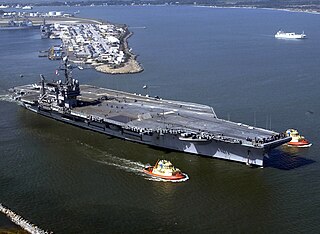
USS John F. Kennedy (CV-67) is the only ship of her class and the last conventionally powered carrier built for the United States Navy. The ship was named after the 35th President of the United States, John F. Kennedy, and was nicknamed "Big John". John F. Kennedy was originally designated a CVA ; however, the designation was changed to CV.

The chain of command leads from the President through the Secretary of Defense down to the newest recruits. The United States armed forces are organized through the United States Department of Defense, which oversees a complex structure of joint command and control functions with many units reporting to various commanding officers. The following is an incomplete list of the various major military units, commands, and DOD offices and agencies, including civilian and military chains of command.

Naval Air Station Jacksonville is a large naval air station located approximately eight miles (13 km) south of the central business district of Jacksonville, Florida, United States.

The Naval Air Systems Command (NAVAIR) provides materiel support for aircraft and airborne weapon systems for the United States Navy. It is one of the Echelon II Navy systems commands (SYSCOM), and was established in 1966 as the successor to the Navy's Bureau of Naval Weapons.

Naval Air Station Oceana or NAS Oceana is a United States Navy Naval Air Station located in Virginia Beach, Virginia. The base is under the jurisdiction of Navy Region Mid-Atlantic and is the headquarters of Strike Fighter Wing Atlantic and Carrier Air Wings 1, 3, 7 and 8. As home to all east coast strike fighter jet squadrons, the Naval Air Station is classified as a master jet base. The airfield is known as Apollo Soucek Field, named after Lieutenant Apollo Soucek, a Navy Test Pilot who set the global altitude record in 1930 by flying a Curtiss "Hawk" biplane to an altitude of 43,166 feet.

Naval Station Norfolk Chambers Field (IATA: NGU, ICAO: KNGU, FAA LID: NGU), is commonly known simply as, Chambers Field, and is named after Captain Washington Irving Chambers. It is a military airport in Norfolk, Virginia that is a part of Naval Station Norfolk. It supports naval air forces in the United States Fleet Forces Command, those operating in the Atlantic Ocean, Mediterranean Sea, and Indian Ocean. It's important to note that, "Chambers Field" only refers to the geographical area of the airport runway, taxiways, two heliports and six helipads.

Fighter Squadron Composite Twelve (VFC-12) is a United States Navy Reserve fighter squadron based at NAS Oceana. It provides adversary training to East Coast Navy air wings. VFC-12 reports to Tactical Support Wing, a component of the Naval Air Reserve Force. The "Fighting Omars" are manned by selected reservists, full-time reservists (FTS) and active duty personnel.
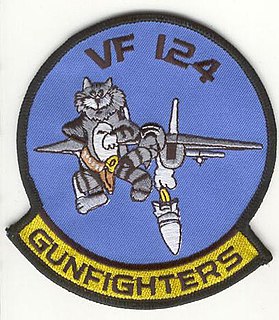
Fighter Squadron 124 or VF-124Gunfighters was a fleet replacement squadron (FRS) of the United States Navy. Originally established on 16 August 1948 as VF-53 it was redesignated VF-124 at NAS Moffett Field on 11 April 1958 due to a need for an increased number of flight training squadrons, itself necessary because of introduction of swept wing fighters into Navy service. In 1961, the squadron relocated to NAS Miramar, California, which would become the U.S. Pacific Fleet's Master Jet Base for fighter aircraft.
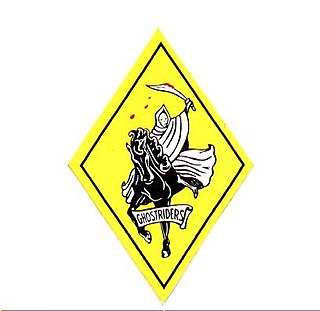
VF-142 Ghostriders was a US Navy fighter squadron established on 24 August 1948 as VF-193, it was redesignated VF-142 on 15 October 1963, and disestablished on 30 April 1995.

Naval Air Station Key West, is a naval air station and military airport located on Boca Chica Key, four miles (6 km) east of the central business district of Key West, Florida, United States.
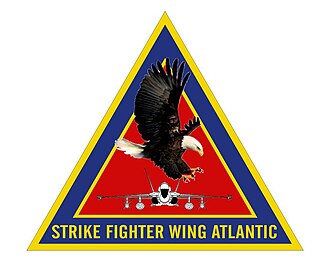
Strike Fighter Wing, U.S. Atlantic Fleet (SFWL) is the U.S. Navy's largest type wing with 18 squadrons flying more than 300 aircraft composed of six different variants of the F/A-18 Hornet and Super Hornet. The wing, based at NAS Oceana, is also home to the east coast F/A-18 Fleet Replacement Squadron (FRS) which trains pilots and Weapon Systems Officers (WSOs) in the Hornet and Super Hornet before they are assigned to operational fleet squadrons. The fleet squadrons deploy as part of Carrier Air Wings (CVWs) on aircraft carriers on both the east and west coasts.

Commander, Naval Air Force Atlantic is the aviation Type Commander (TYCOM) for the United States Naval aviation units operating primarily in the Atlantic under United States Fleet Forces Command. Type Commanders are in administrative control (ADCON), and in some cases operational control (OPCON) of certain types of assets assigned to the Pacific and Atlantic Fleets. AIRLANT is responsible for the material readiness, administration, training, and inspection of units/squadrons under their command, and for providing operationally ready air squadrons and aircraft carriers to the fleet.

The Naval Sea Systems Command (NAVSEA) is the largest of the United States Navy's five "systems commands," or materiel organizations. From a physical perspective, NAVSEA has four shipyards for shipbuilding, conversion, and repair, ten "warfare centers", the NAVSEA headquarters, located at the Washington Navy Yard, in Washington D.C., and other locations in 15 states and 3 overseas continents.
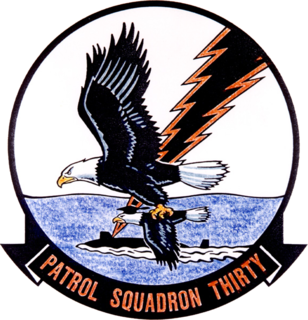
Patrol Squadron 30 (VP-30) is a maritime patrol squadron of the United States Navy, established on 30 June 1960. It is based at Naval Air Station Jacksonville, Florida United States.
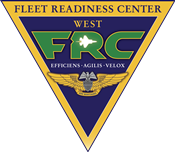
Fleet Readiness Center West (FRCW) is located in Lemoore Station, California and is part of Naval Air Station Lemoore. It is a subsidiary of the Navy's Fleet Readiness Center Command
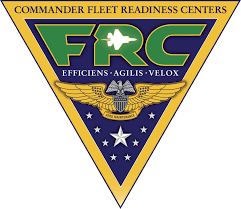
Fleet Readiness Center Northwest (FRCNW) is located in Oak Harbor, Washington and is part of Naval Air Station Whidbey Island. Although originally named Aircraft Intermediate Maintenance Detachment and established in 1959, it was changed on October 10, 2008 and is a subsidiary of the Navy's Fleet Readiness Center Command.

Fleet Readiness Center East (FRCE) is a US Navy aviation repair and maintenance facility located in Havelock, North Carolina on Marine Corps Air Station Cherry Point. FRC East is one of nine main subsidiaries of the Navy's Fleet Readiness Center Command

Fleet Readiness Center Southwest (FRCSW) is an American Naval Aviation repair and maintenance facility on board NAS North Island.
Fleet Readiness Center Western Pacific (FRCWP) is an aircraft maintenance unit of the United States Navy. It is located at Naval Air Facility Atsugi, Japan. It is a subsidiary of the Navy's Fleet Readiness Center Command.


















